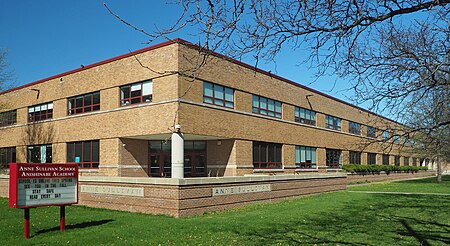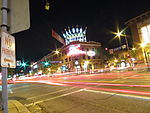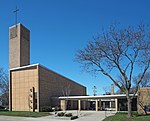Anne Sullivan Communication Center

Anne Sullivan Communication Center is a school in Minneapolis, Minnesota, United States, which serves 600 students from preschool through eighth grade. The School houses a whole-day Kindergarten program as well as Early Childhood Special Education and Early Family Childhood Education programs. Anne Sullivan School shares an attendance area with and is a feeder school for Minneapolis South High School. Specialist Subjects include Media, 5th- 8th Grade Band, Fitness, Health, Physical Education and Dance/Drama. Anne Sullivan School supplements their core curriculum with a Gifted & Talented program, a peer mediation program and the Second Step Social Skills Program and houses a large Deaf/Hard-of-Hearing program for all grades and incorporates Mainstreaming as well as self-contained resource rooms. D/HH Students also participate in many local and state-wide extra curricular programs for the deaf. Technology used at Sullivan includes four computer lab and a wireless mobile digital media labs.The school is named after Anne Sullivan (1866–1936), teacher and companion to Helen Keller.
Excerpt from the Wikipedia article Anne Sullivan Communication Center (License: CC BY-SA 3.0, Authors, Images).Anne Sullivan Communication Center
East 28th Street, Minneapolis
Geographical coordinates (GPS) Address External links Nearby Places Show on map
Geographical coordinates (GPS)
| Latitude | Longitude |
|---|---|
| N 44.9525 ° | E -93.225555555556 ° |
Address
Anne Sullivan Communication School
East 28th Street 3100
55406 Minneapolis
Minnesota, United States
Open on Google Maps










